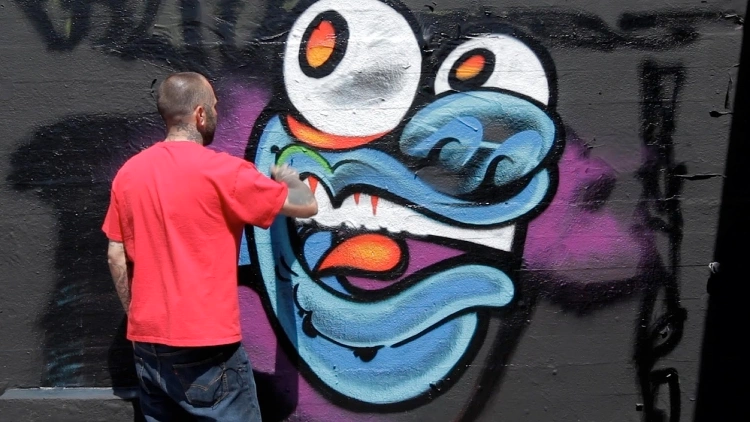Consider, for example, the late Palaeolithic cave drawings, the ancient Egyptian rock art, or the many examples of graffiti preserved at ancient Roman archaeological sites. Even though they’re all considered forms of street art, each one is unique. For political expression and social critique, New York City experienced a boom in graffiti in the 1960s, which exploded in popularity throughout the city. After a few years as a recognised trend within conceptual art, New York City’s most eminent galleries began to exhibit the work of prominent street artists. Now Faile’s Street Art is one new addition to the legacy.
Who do you consider to be the most important figures in the history of the genre?
As far as the New York street art culture is concerned, there is no doubt that Jean-Michel Basquiat and Keith Haring are the most prominent figures. Many people were familiar with the work of Keith Haring’s subway drawings and Jean-Michel Basquiat’s enigmatic as well as prolific SAMO tags before they joined the realm of commercial art, and both artists’ works were rapidly recognised by the general public.
What precisely is street art, and who are the folks who call themselves street artists?
When it comes to whether or not something is street art, we believe the concept behind it is what matters most. Street art is a form of artistic and political expression that has its origins in the urban setting. Thus, street art is democratic in its very nature. Of course, in recent years, it has expanded its sphere of influence. As well as challenging traditional notions of what constitutes good and poor art, conceptual art often provides subversive social and political commentary. For Street Art Graffiti Collection it works fine.
Street art’s rising appeal may be attributed to its lack of intellectual sophistication, its range of subject matter, and its immediate aesthetics. Street art began as a minor subgenre, but has now become a worldwide phenomenon. Despite its rapid ascent to fame, street art has humbler beginnings.
Buying street art seems to be more popular with a certain kind of art consumer.
We are seeing street art consumers from a broad range of backgrounds in our galleries. Investing in street art might seem out of reach for the average person, particularly when you consider that works by well-known street artists can fetch hundreds of thousands, at major auction houses. As long as you’re willing to pay for it, you may own street art, and since the street art industry is so young, even the most well-known artists have work available for sale at lower prices.
The answer to this question depends on how you define “investment” and “enjoyment.”
Street art has the potential to be more lucrative than any other genre in today’s market. For example, we notice that auction results constantly shatter records and that returns exceed expectations in both the public as well as private markets for works by the large players.
It’s time to find out which new street artists to watch out for
Endless, a British street artist whose work was just purchased by the Uffizi museum, is worth keeping an eye on since institutional recognition is a great predictor of an artist’s success. As a consequence, Endless is an artist to keep an eye on.





